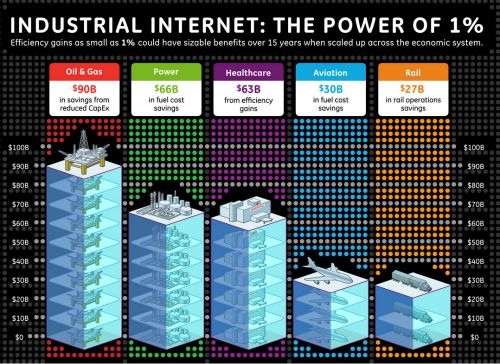
Running and growing a business is all about making a series of crucial decisions. Whether you want to enhance your product with more features or launch a new marketing campaign, fast and accurate decision-making plays a key role.
Business intelligence (BI) tools take the guesswork out of enterprise decision-making. They empower business leaders and other stakeholders with relevant actionable insights to help them make the best choices.
BI tools eliminate the need for enterprises to rely on past experience and intuition. Instead, you get an accurate and data-driven glimpse of what’s going to work.
In this blog, we’ll take a closer look at how modern BI tools are ushering in a new era of enterprise decision-making. Let’s get started.
Business Intelligence: The Traditional Approach
There was a time when the use of BI tools was restricted to data analysts. Senior-level executives and business leaders had to depend on them to make sense of any data that was collected.
Typically, the process involved an executive identifying a specific question that was crucial for business growth. It was followed by an analyst entering relevant queries into BI tools to derive meaningful insights. Thereafter, they’d use a visualization tool to convert their findings into more comprehensible formats, such as graphs and charts.
While that approach worked in the past, it presents several challenges for new-age enterprises. That’s because of the sheer amount of data that’s being generated from various sources. As organizations accelerate their adoption of digital technologies, analysts are going to be overwhelmed by a plethora of data.
A recent survey estimates that data creation across the globe will skyrocket to 163 zettabytes (ZB) by 2025. It’ll be 10x the data that existed in 2017. Traditional BI tools aren’t equipped to handle such data volumes.
Also, modern enterprises are constantly evolving to embrace new business models. The pandemic has compelled them to brainstorm new ways to reach target consumers and sell their products. That introduces even more complexities in data collection and analysis.
The Rise of AI-Powered Business Intelligence
Technological advancements in artificial intelligence are facilitating the development of more robust BI tools. Supported by powerful AI algorithms, these tools eliminate the need for business leaders to ask the right questions before deriving insights from data.
Instead, new-age BI tools are equipped to analyze tons of data from multiple sources to identify patterns and trends. Also, they present these statistical insights in the form of graphs and charts from the get-go.
Data analysts further scrutinize these patterns and select the ones that are relevant to their enterprise. Thereafter, they use these tools to recommend the most suitable actions for business leaders.
The biggest benefit of AI-driven business intelligence is that it doesn’t depend on an analyst’s ability to identify the right variables for analysis. Nor does it rely on decision-makers to ask questions before generating insights. That, in turn, will help resolve the complexities of new business models.
Democratization of BI Insights
As the quest for more sophisticated BI tools continues, their use will no longer be restricted to analysts. Instead, new-age BI tools are being designed to support a wide array of users, from IT engineers and accountants to HR managers.
These tools provide embedded analytics that can be integrated into department-specific third-party applications. Also, they come with more intuitive interfaces that make it easy for anyone to navigate the platform.
It helps create a more democratized framework where employees from different departments don’t have to depend on analysts. Instead, they can use BI tools to draw insights from data sources that are relevant to their domain.
Leveraging Unstructured Data
As enterprises move to digital communication channels, they’re going to be overwhelmed with a plethora of unstructured data in the form of online reviews, social media comments, live chat transcripts, and customer support tickets.
Each format hides plenty of useful information about customer satisfaction, audience sentiment, brand perception, and more. Traditional BI tools aren’t equipped to process that kind of unstructured data.
That’s where cloud data warehouses (CDWs) can come to your rescue. They help convert unstructured data into a format that can be easily processed and understood. Modern BI tools are designed to support integration with leading CDWs, such as Athena, Redshift, Snowflake, and more.
Harnessing the Potential of BI Tools
The digital transformation of enterprises highlights the need for sophisticated BI solutions that utilize AI and cloud data warehousing. However, simply getting your hands on a feature-packed application won’t do the trick. You must use a strategic approach to facilitate the adoption of new BI tools.
The first step is to select the right cloud data warehouse for your enterprise. It’ll go a long way to simplify data storage and processing. It’s a good idea to delve into a detailed Athena vs Redshift comparison to identify the right fit for your organization. Consider scalability, security, and pricing before making the final selection.
It’s equally important to create a BI toolkit with applications that address the unique needs of your employees. Consider individual use cases of BI tools in your organization. Also, make sure the tools are compatible with the selected CDW and third-party applications used by various teams.
Make sure you don’t ignore important aspects, such as data migration, the total cost of ownership (TOC), and the learning curve.
Closing Thoughts
Powered by AI algorithms and cloud data warehousing, modern business intelligence solutions empower enterprises with statistical insights and actions. These tools make BI insights accessible to each layer of an organization, thus creating a democratized framework for enterprise decision-making.

Founder Dinis Guarda
IntelligentHQ Your New Business Network.
IntelligentHQ is a Business network and an expert source for finance, capital markets and intelligence for thousands of global business professionals, startups, and companies.
We exist at the point of intersection between technology, social media, finance and innovation.
IntelligentHQ leverages innovation and scale of social digital technology, analytics, news, and distribution to create an unparalleled, full digital medium and social business networks spectrum.
IntelligentHQ is working hard, to become a trusted, and indispensable source of business news and analytics, within financial services and its associated supply chains and ecosystems

























